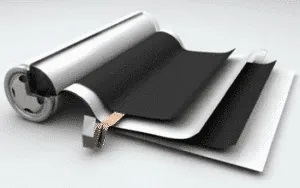
In today's world, the need for sustainable energy solutions has become more important than ever. We are facing a growing population and increasing energy demands, along with the urgency to address climate change. In this quest for sustainable energy, lithium iron phosphate (LFP) cells have emerged as a powerful catalyst. These cells, with their numerous benefits and applications, play a pivotal role in advancing clean energy technologies. In this blog, we will explore the potential of LFP cells and how they contribute to a sustainable future.
LFP cells, also known as lithium iron phosphate batteries, are gaining popularity due to their exceptional energy storage capabilities. They are known for their long cycle life, high thermal stability, and safe operation. With a unique composition, the LFP cell offers a high energy density and deliver consistent power output, making them ideal for various applications.
Energy Storage Solutions:
LFP cells have proved themselves as efficient energy storage solutions, enabling the integration of renewable energy sources into the power grid. As the demand for renewable energy grows, such as solar and wind, the ability to store excess energy becomes crucial. LFP cells are capable of storing large amounts of energy efficiently, providing a stable and reliable power supply, even during peak demand periods.
Electric Vehicles (EVs):
One of the most prominent applications of LFP cells lies in the electric vehicle industry. As the world transitions towards greener transportation, EVs are becoming increasingly popular. LFP cells offer a longer lifespan and enhanced safety compared to other battery chemistries, making them an optimal choice for EV manufacturers. Additionally, LFP cells have a higher resistance to overheating and thermal runaway, reducing the risk of fire hazards.
Sustainable energy solutions go hand in hand with reducing our environmental impact. LFP cells contribute significantly to this cause by offering several environmental advantages.
Reduced Carbon Emissions:
By promoting the adoption of clean energy technologies like EVs, LFP cells play a key role in reducing carbon emissions. Electric vehicles powered by LFP cells emit little to no greenhouse gases during operation, making them a viable alternative to combustion engine vehicles. The widespread use of LFP cells in EVs can significantly contribute to a greener and cleaner transportation system.
Recycling and Reusability:
LFP cells are highly recyclable, allowing for the recovery of valuable metals like lithium and iron. This reduces the dependency on limited natural resources and minimizes the environmental impact of mining. Moreover, the ability to reuse certain components of LFP cells extends their lifespan, leading to a reduction in overall waste generation and promoting a circular economy.
LFP cells have emerged as catalysts for sustainable energy solutions, offering numerous benefits and applications. From energy storage solutions to powering electric vehicles, these cells are revolutionizing the renewable energy sector. With their long cycle life, high thermal stability, and eco-friendly nature, LFP cells are paving the way for a greener and cleaner future. As we strive towards achieving sustainability goals, LFP cells will continue to play a pivotal role in our quest for a more sustainable world.